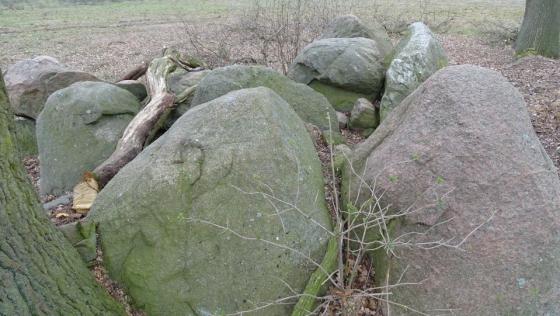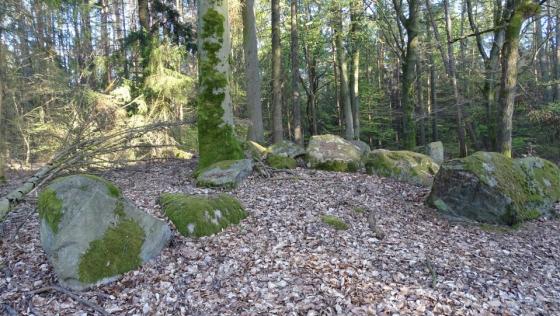taken from the “Archäologisch-historischer Wanderweg Lüdelsen (4)” information board:
Site 6 – The King’s Grave
Construction/Burials: Funnel Beaker Culture (around 3700/3600-3300 BC);
Secondary burials: Globular Amphora culture (2800-2600 BC), Iron Age (700-500 BC)
The “King’s Grave” consists of a trapezoidal enclosure of large boulder blocks (38 m x 5-8 m), which surrounds the long hill. Therein lies the almost 9 m long and 2.40 m wide burial chamber (internal height: around 1.50 m). The entrance on the south side of the chamber is only partially preserved.
The mound is multi-phase: The first, about 40 cm high mound was built between 3700-3500 BC. Only some time after the embedding of the approximately 1.30 m high second mound (from 3500-3300 BC) niches were created on the hilltop to position the large enclosre stones there – in this time also the edification of the stone burial chamber. The gaps between the boulders were carefully closed with a dry masonry of split red sandstone slabs. Between 2800-2600 BC the mound was again increased by about 0.50 m and the dry masonry was torn out.
After that the flanks were raised, so that only the upper third of the boulders was visible. At the same time, the chamber for post-burial (late Globular Amphora culture) was probably completely cleared and then filled with sand. An urn from the middle of the chamber dates from the early Iron Age (7th – 6th century BC).
The origins of the “King’s Grave” are older than the megalithic tomb Lüdelsen 3 (Station 2). No tombs were discovered in the mounds, but on the surface of the first two mounds were several smaller shallow depressions of charcoal, the function of which is unknown.
The excavations were carried out in 2009 and 2010 as part of the research project “Megalithic Landscape Altmark”.











































